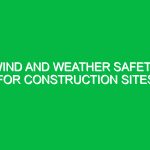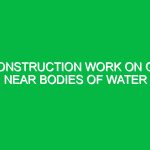Introduction to Mobile Elevated Work Platforms (MEWPs) Safety
Mobile Elevated Work Platforms (MEWPs) are essential tools in various industries, providing safe access to elevated work areas. They are commonly used in construction, maintenance, and warehousing. Understanding MEWPs safety is crucial for protecting workers and ensuring compliance with Health, Safety, and Environment (HSE) regulations. This article will explore the significance of MEWPs safety, the potential hazards involved, and best practices for ensuring safe operations.
Understanding Mobile Elevated Work Platforms (MEWPs)
MEWPs are designed to lift personnel and their equipment to heights needed for tasks like installation, maintenance, and inspection. They come in various types, including scissor lifts, boom lifts, and personnel lifts. Each type has unique features suited for different tasks. However, despite their benefits, MEWPs present specific risks that require careful management.
Potential Hazards and Risks Associated with MEWPs Safety
MEWPs can pose several hazards if not operated correctly. Understanding these risks is the first step in ensuring safety.
1. Falls from Height
Falls are the leading cause of injuries and fatalities in the construction industry. When workers operate MEWPs, they may be at significant heights, increasing the risk of serious injuries if they fall. Factors contributing to falls include improper use of guardrails, unsteady platforms, and lack of personal protective equipment (PPE).
2. Tip-Over Incidents
Tip-overs occur when a MEWP becomes unstable, often due to uneven ground or overloading. This can lead to the platform collapsing, putting operators at severe risk. Understanding the load capacity and ensuring the platform rests on stable surfaces are essential for preventing tip-overs.
3. Electrical Hazards
MEWPs often operate near power lines. Contact with overhead electrical wires can result in electrocution. Workers should always be aware of their surroundings and maintain a safe distance from electrical sources.
4. Equipment Malfunctions
Mechanical failures can lead to accidents. Regular maintenance checks are necessary to ensure that all components, including hydraulic systems, controls, and safety features, are functioning correctly. Ignoring maintenance can lead to equipment breakdowns while in use.
5. Weather Conditions
Weather can significantly impact the safety of MEWP operations. Wind, rain, and ice can affect stability and visibility. Operators should assess weather conditions before using MEWPs and avoid operation during severe weather.
6. Inadequate Training
One of the most critical factors in MEWPs safety is operator training. Inadequate training can lead to improper use and increase the likelihood of accidents. Operators must understand how to operate the equipment safely and recognize potential hazards.
Safety Precautions and Best Practices for MEWPs Safety
To mitigate the risks associated with MEWPs, implementing safety precautions and best practices is essential.
1. Conduct a Risk Assessment
Before any MEWP operation, conduct a thorough risk assessment. Identify potential hazards in the work area and evaluate the risks associated with using the MEWP. This assessment should include examining ground conditions, power line proximity, and environmental factors.
2. Ensure Proper Training
Invest in comprehensive training programs for all MEWP operators. Training should cover safe operation practices, emergency procedures, and hazard recognition. Certification should be obtained from recognized training providers.
3. Use Personal Protective Equipment (PPE)
All personnel operating or working near MEWPs should wear appropriate PPE. This includes hard hats, harnesses, and non-slip footwear. Ensure that safety harnesses are properly attached to the MEWP when working at heights.
4. Follow Manufacturer Guidelines
Always adhere to the manufacturer’s instructions regarding the operation and maintenance of MEWPs. This includes load limits, inspection protocols, and safety features. Familiarize yourself with the specific equipment being used.
5. Conduct Regular Inspections
Regularly inspect MEWPs for any signs of wear or damage. Check hydraulic systems, controls, and safety features before each use. Implement a maintenance schedule to address any issues promptly.
6. Maintain Clear Communication
Establish clear communication among all team members involved in MEWP operations. Use radios or hand signals to ensure that everyone is aware of the tasks being performed and any potential hazards.
7. Monitor Weather Conditions
Always check weather forecasts before operating MEWPs. If weather conditions are unfavorable, postpone the work until it is safe to proceed. Wind speeds above recommended limits or icy conditions can increase the risk of accidents.
8. Implement Emergency Procedures
Develop and communicate emergency procedures for all personnel involved in MEWP operations. This should include evacuation plans, rescue operations, and response protocols for accidents or equipment failures.
Regulations and Standards Governing MEWPs Safety
Compliance with regulations is vital for ensuring MEWPs safety. Various standards and regulations govern the use of MEWPs. Familiarity with these can aid in maintaining a safe work environment.
1. OSHA Regulations
In the United States, the Occupational Safety and Health Administration (OSHA) provides regulations for MEWPs through standards outlined in 29 CFR 1926.452. These regulations cover topics such as training, fall protection, and equipment maintenance.
2. ANSI Standards
The American National Standards Institute (ANSI) sets standards for MEWPs, specifically ANSI A92. This standard addresses design, performance, and training for safe use of aerial platforms.
3. European Standards
In Europe, the EN 280 standard outlines safety requirements for mobile elevating work platforms. Compliance with these standards is crucial for ensuring safety across the continent.
4. Local Regulations
In addition to national and international standards, local regulations may also apply. Always check with local authorities to ensure compliance with any additional safety requirements.
Conclusion: The Importance of MEWPs Safety
Mobile Elevated Work Platforms (MEWPs) are invaluable tools that enhance productivity in various industries. However, they also present significant risks that must be managed. Understanding the potential hazards, implementing safety precautions, and adhering to regulations are essential for ensuring safe operations. By prioritizing MEWPs safety, organizations can protect their workers and maintain a safe and efficient work environment. Proper training, regular maintenance, and clear communication are pivotal components in fostering a culture of safety that minimizes risks associated with MEWPs.


